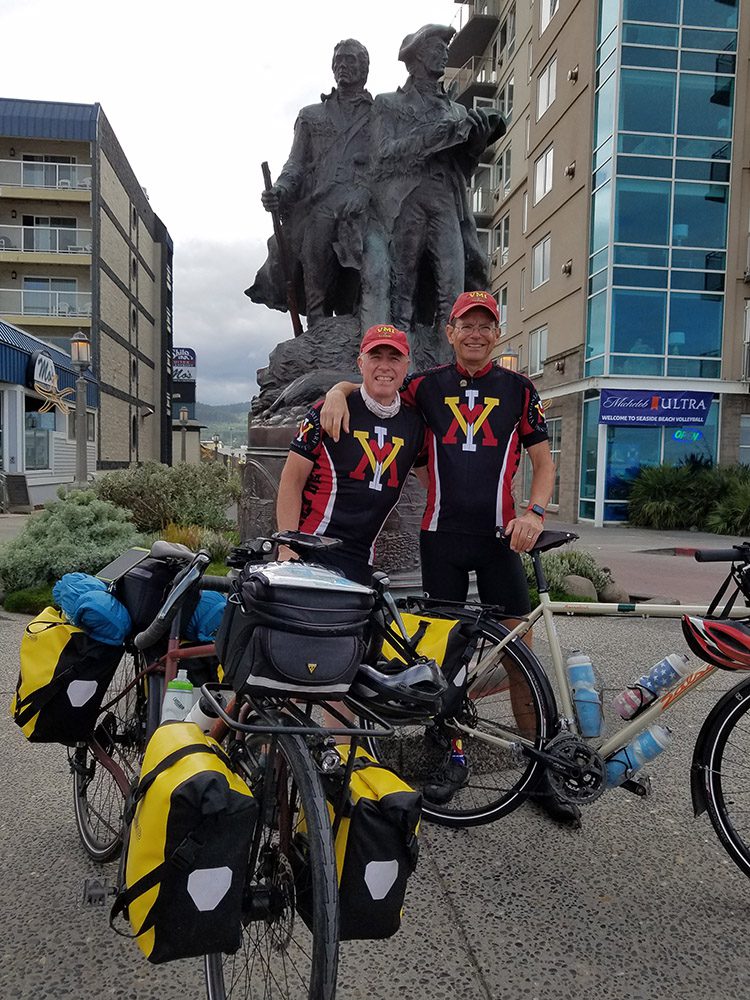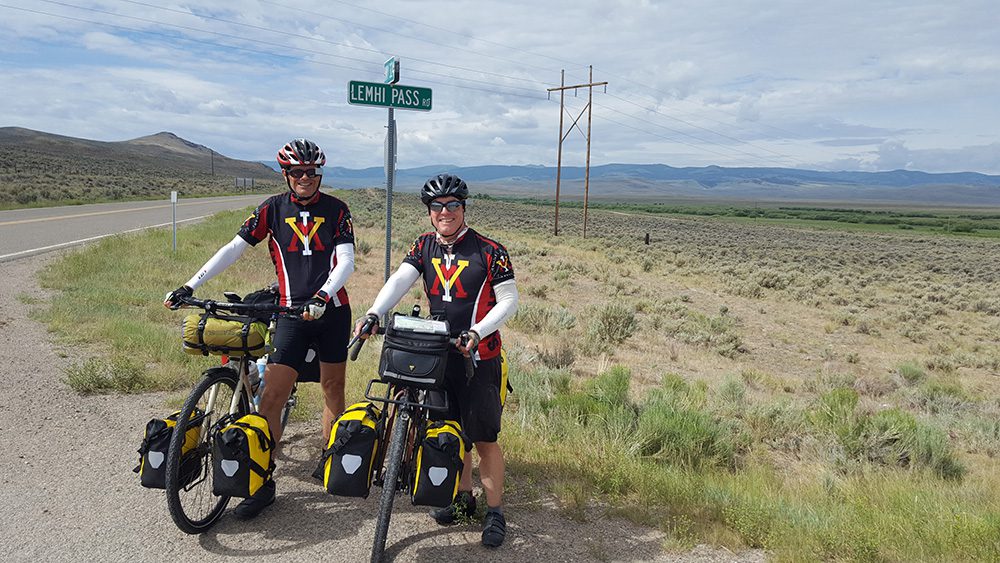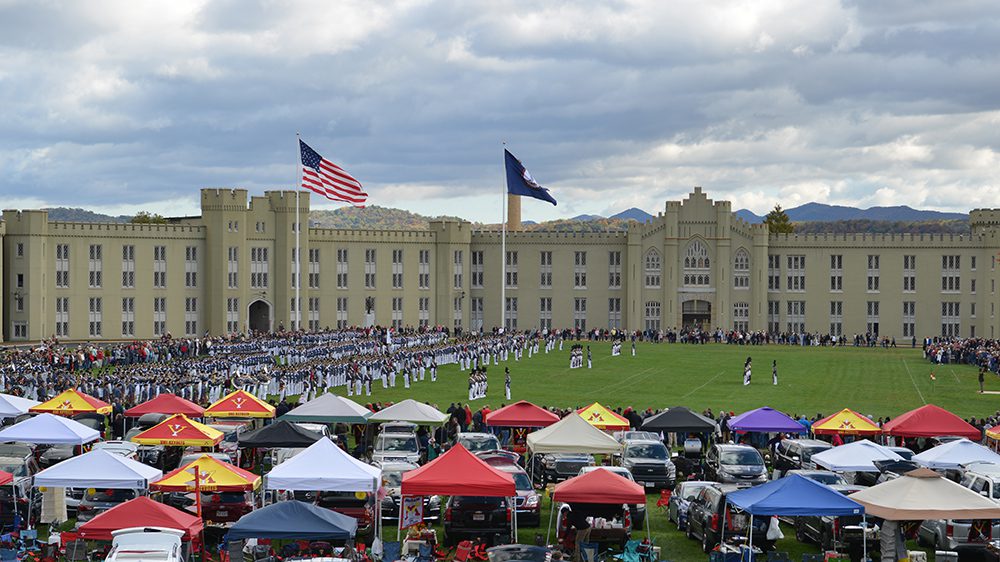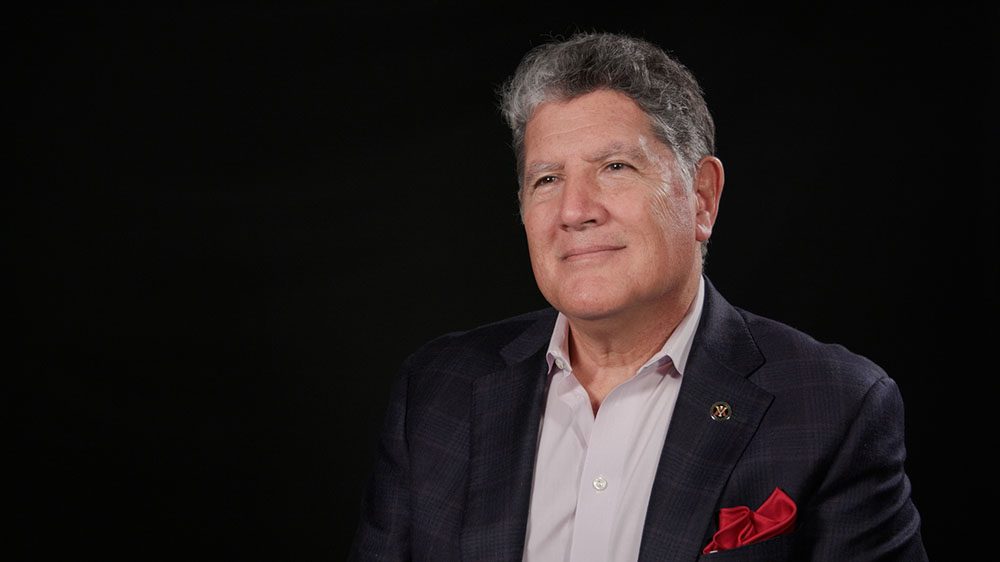It started with a dream that turned into a question of ability that became a mission.
Brother Rats Parke Smith ’79 and Doug Doerr ’79 had both been long captivated by the Corps of Discovery expedition led by Meriwether Lewis and William Clark from 1804-06 – and both were avid cyclists. Their combined interests evolved into the adventure of a lifetime.

Smith and Doerr at their finishing point in Seaside, Oregon.
The concept was – to the extent possible – to recreate the journey of Lewis and Clark and the Corps of Discovery from its origin at Wood River, Illinois, along the Missouri River to its headwaters, through three passes in the Rocky Mountains, down the Columbia River, concluding at the generally accepted terminus of Seaside, Oregon. The journey lasted nearly three months and took the BRs through 3,100 miles of the U.S.
In preparation – the planning phase took two years – the pair identified possible camping spots and available hotels, bicycle repair shops and challenging route characteristics. One critical section they identified was a 24.5-mile gravel road in a remote part of Montana, through the 7,373 foot Lemhi Pass. Making sure food and water was available throughout the route was crucial.
“We went over every inch of the route in advance and carried maps, a GPS-based bike computer and our cell phones with all the necessary mapping and weather-related apps. We used it all,” said Smith.
Beyond route-planning, it was important to use the right bikes and the right gear. Extensive research led Smith and Doerr to use top-end touring bikes and shoes that could withstand three months of constant abuse. They invested in quality racks and waterproof panniers, sleeping bags, tents, three water bottles each, bicycle head and tail lights, extra cycling clothes and even street clothing for those odd days off.
“We carried minimalist cooking equipment and backpacking meals, even though our intent was to travel ‘restaurant-to-restaurant,’” said Doerr. “The weight and volume of extensive cooking kits and food were prohibitive, but mostly we didn’t want to risk the trip over our own dishwashing abilities. Only one lapse could spell disaster!”
They packed a small-scale repair shop, carrying bike tools, extra inner tubes, extra nuts and bolts, a small air pump and a first-aid kit – everything they could think of to cover possible contingencies. For personal safety, they wore comfortable, high-visibility cycling clothes and helmets.
“One of the more interesting bits of gear we each carried was a solar panel that charged a battery pack,” said Smith. “The battery pack could then be used to recharge our lights, phones and the computer at the end of each day.”
Before beginning their cross-country journey, the pair put in many months – and many miles – of solid training in the saddle. Their “final exam” was a four-day test run from eastern Virginia to Lexington for their 40th Reunion at VMI in April 2019. Exam passed, they began their journey in mid-May.
The pair began their journey May 14 – the same day Lewis and Clark set off in 1804 – but had to adjust the starting point from Wood River to St. Charles, Missouri, due to extensive regional flooding.
“Mother Nature was to become our constant companion throughout the journey. Sometimes we were friends with her,” said Smith. “Sometimes we weren’t. But we quickly learned to adjust to her whims and made the best of every day.”
Their initial route stretched across Missouri along the Katy Trail, the beautiful result of a rails-to-trails initiative. The Katy Trail closely follows the Missouri River, making it easy for Smith and Doerr to envision the Corps of Discovery as they worked their way upstream and into the prevailing wind while fighting snags and clouds of mosquitoes.
They eventually left the Katy Trail and forged ahead on back roads, eventually making their way around to the north side of Kansas City. With flooded roads blocking travel to the north and west, the pair called on another brother rat – Jeff Vordermark ’79. Vordermark housed and fed his BRs while they considered their next move. After a few days of “BR hospitality,” Vordermark drove the pair around flooding to Council Bluffs, Iowa, where they continued their journey.
Flooding continued to be the norm as the pair traveled through the Midwest into the west, passing through Iowa, South Dakota, North Dakota and into Montana.
“We could only marvel at the resilience of the farmers and ranchers trying to make the best of a really bad situation,” said Doerr. The flooding helped the two BRs picture how Lewis and Clark’s party felt more than two centuries earlier. “It was easy to imagine being part of the Corps of Discovery and seeing the strength of the river, both up close and from the bluffs above, and to see the abundance of wildlife – everything from wild turkeys and pheasants to deer and antelope.”





